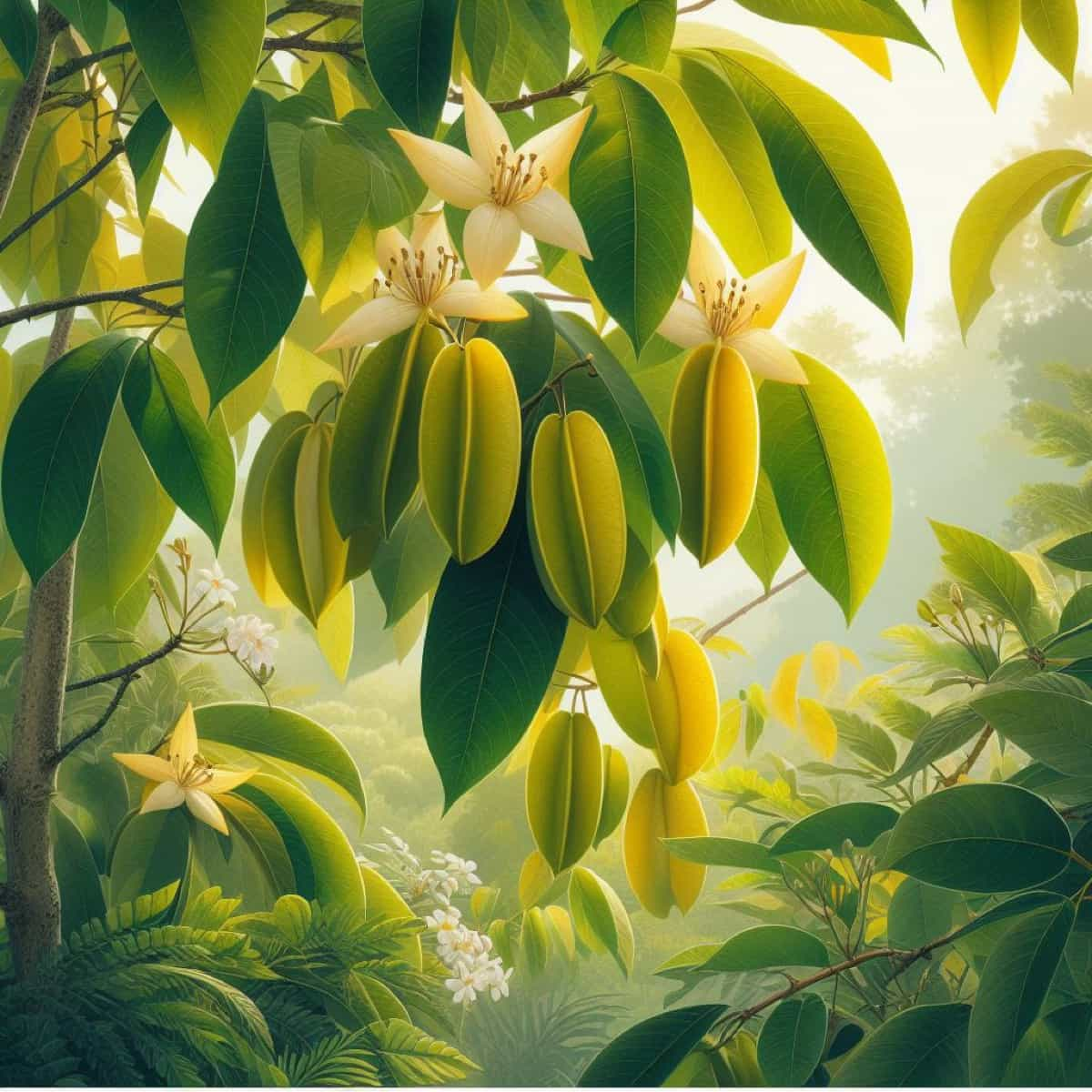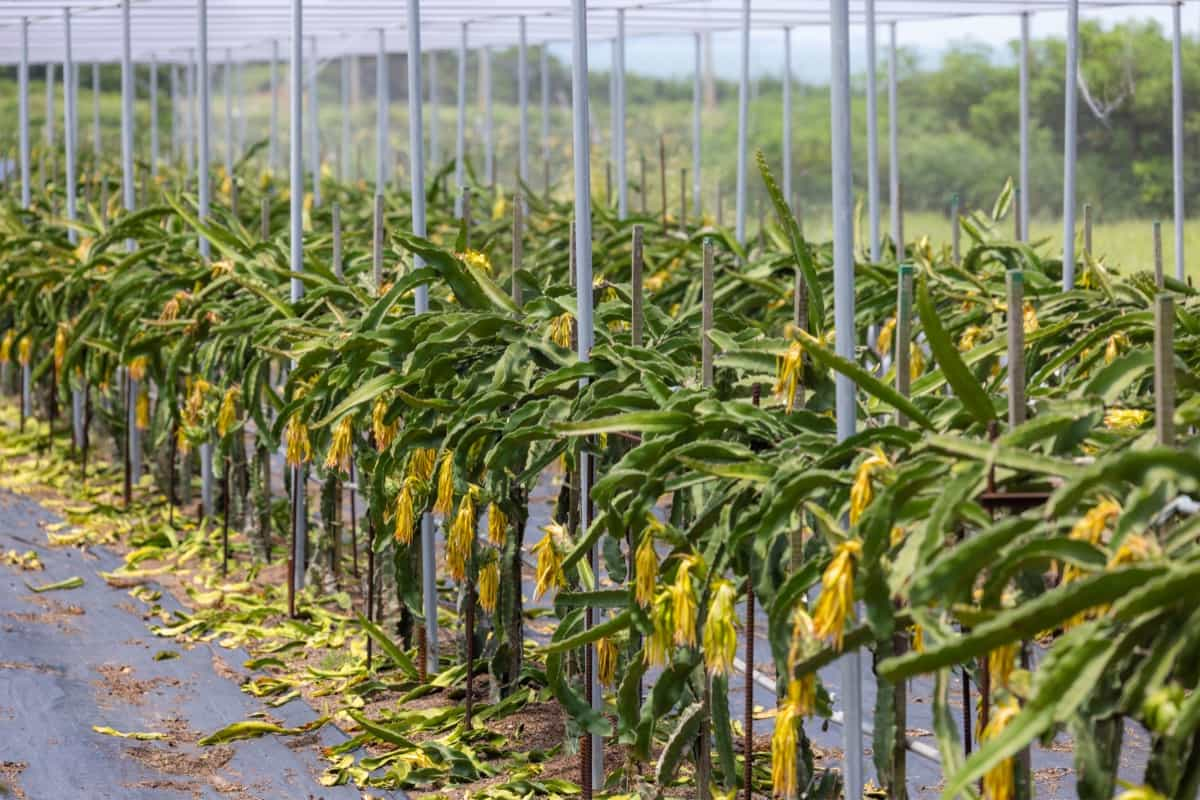Many gardening enthusiasts wonder, “How do you grow exotic fruits at home?” or “How do you grow exotic fruits?” With the advances in greenhouse technology, cultivating your favorite exotic fruits within the confines of your home has become a lot easier. A greenhouse is a controlled environment where you can adjust the conditions to suit the needs of various fruit plants, especially the exotic ones.

But what makes a fruit an exotic fruit? Exotic fruits are typically those that aren’t native to your location and often come from tropical or sub-tropical climates. If you’re keen to learn what fruits are easiest to grow in a greenhouse, this guide will provide the steps to take on this exciting journey.
How to Grow Exotic Fruits in Greenhouse
Understanding the Basics: Setting Up Your Greenhouse for Exotic Fruit Cultivation
It would be best to establish a solid foundation before diving deep into exotic fruit cultivation. A greenhouse is a controlled environment to simulate the native conditions in which these fruits thrive. Pick a place that gets plenty of sunlight all day long. Depending on the size of your space and budget, you can opt for a freestanding or attached greenhouse.
Remember to invest in a durable frame, typically made of aluminum, wood, or PVC. Cover the structure with appropriate materials like polyethylene, polycarbonate, or shade cloth, depending on the fruits you wish to grow. Good flooring, preferably gravel or concrete, ensures proper drainage and prevents weed growth.
Choosing the Right Exotic Fruits for Greenhouse Growing
With countless exotic fruits available, you may feel overwhelmed when deciding which to grow. Start by understanding your region’s climate and the requirements of different exotic fruits. Some popular options for greenhouse cultivation include passion fruits, guavas, figs, and kiwis. If you’re a beginner, choose more forgiving fruits in terms of care. For instance, passion fruits and figs are the easiest to grow in a greenhouse. Consider the space available, as some plants, like the papaya, can grow quite large.
Preparing the Soil and Providing Optimal Nutrients for Exotic Fruit Plants
Begin by testing the soil’s pH and nutrient levels. Most exotic fruits prefer slightly acidic to neutral pH levels, ranging between 6.0 to 7.5. Opt for a well-draining soil mix enriched with organic compost. Regularly check and maintain the nutrient balance. Fruits like guavas and passion fruits thrive on a balanced fertilizer, whereas others might need specific nutrient ratios. Regularly feed the plants, but be wary of over-fertilizing, which can lead to poor fruit development.
Selecting and Propagating Exotic Fruit Varieties in a Greenhouse Environment
Once you’ve identified the fruits you wish to cultivate, the next step is to procure high-quality seeds or saplings. Look for disease-resistant and high-yielding varieties. The propagation method varies among fruits. Some, like the passion fruit, can be grown from seeds, while others, like kiwi, require cuttings or grafting. Ensure that your chosen method aligns with the fruit variety and offers the best chance of success. Always follow recommended germination practices, provide adequate space between plants, and monitor for pests and diseases.
In case you missed it: Fertilizing Potted Passion Fruit Vines: Organic, Natural, Homemade, NPK, and Schedule

Creating the Ideal Microclimate: Temperature, Humidity, and Ventilation
For exotic fruits to flourish, replicating their native microclimate is crucial. Temperature, humidity, and ventilation play pivotal roles. Generally, tropical fruits prefer warmer temperatures, ranging from 65°F to 80°F. Investing in a heating system for colder months and shade cloth for hotter periods can help maintain consistent temperatures.
Humidity is equally important, with most exotic fruits preferring levels between 60% to 80%. Using humidifiers or misting systems can help in maintaining desired levels. Lastly, ensure good ventilation to prevent fungal diseases and provide the plants with fresh air. Based on your greenhouse setup, automated vent openers or manually operated vents can be employed.
Irrigation Techniques for Exotic Fruit Plants in a Greenhouse
In a greenhouse setting, providing sufficient moisture and preventing over-watering is crucial. Drip irrigation is an efficient method that ensures water directly reaches the roots without wetting the foliage, which can lead to fungal diseases. Additionally, soaker hoses, which release water slowly, can be an excellent choice for maintaining consistent soil moisture.
Different exotic fruit plants need different amounts of water as they grow. For instance, young plants need more water often than older ones. Monitoring soil moisture levels and adjusting your watering routine accordingly is essential, ensuring a balance between dry spells and waterlogging to foster healthy growth.
Pruning and Training Exotic Fruit Trees and Vines for Maximum Yield
Proper pruning encourages robust growth, improves air circulation, and improves light penetration. Begin by removing dead or diseased branches. For trees, maintain an open canopy by thinning out crowded branches, facilitating better light exposure and reducing disease risk. Training vines like passion fruits on trellises or supports can help manage growth, ensuring that the plants receive adequate light and air. Regularly pinching off growing tips can promote bushier growth and higher fruit yield. Always use sharp, sterilized pruning tools and make clean cuts to prevent damage and disease.
Managing Pests and Diseases in a Greenhouse Setting
A greenhouse, while providing a controlled environment, can also be a breeding ground for pests and diseases if not monitored closely. Pests like aphids, spider mites, and whiteflies can affect exotic fruit plants. Introducing beneficial insects like ladybugs can offer a natural solution to aphid infestations. For diseases, prevention is the best approach.
Ensure proper ventilation and avoid excessive moisture, as damp conditions favor fungal growth. Check your plants often for any signs of sickness or bugs, and take quick action if you see any. Organic insecticidal soaps or neem oil can help manage minor infestations, while more severe cases might require targeted treatments. Always ensure you’re using greenhouse-approved products to avoid harm to your plants or beneficial insects.
Harvesting and Storing Exotic Fruits from Your Greenhouse
One of the most rewarding aspects of growing exotic fruits is the harvest. Recognizing the right time to pick your fruits ensures they have the best flavor and nutritional content. Familiarize yourself with the typical ripening indicators for each fruit variety. Some exotic fruits, like guavas, emit a sweet fragrance when ripe.
Others change color or become softer to the touch. Once harvested, handle the fruits gently to prevent bruising. Storage requirements vary; while some fruits, like kiwis, can be stored in a cool, dark place for several weeks, others, like figs, are best consumed fresh. Consider freezing or making preserves from your exotic fruit harvest for a longer shelf life.
In case you missed it: 10-10-10 Fertilizer for Fruit Trees: How to Make, Use and Price

Troubleshooting Common Issues in Growing Exotic Fruits in a Greenhouse
While growing exotic fruits in a greenhouse can be an exhilarating experience, it isn’t without challenges. Some common issues include inadequate pollination, leading to poor fruit sets. In such cases, consider hand-pollinating or introducing pollinator-friendly plants to attract bees. Yellowing leaves could indicate nutrient imbalances or waterlogging, necessitating a soil test or improved drainage.
If fruits drop prematurely, it could be due to erratic watering or temperature fluctuations. Maintaining a daily log of your greenhouse activities, including watering, temperature readings, and any observations, can help identify patterns and troubleshoot issues. With knowledge and keen observation skills, you can navigate these challenges and ensure a thriving exotic fruit garden in your greenhouse.
Conclusion
Growing exotic fruits in a greenhouse is both an art and a science, blending the nuances of nature with the precision of controlled cultivation. From irrigation to pest management, every step offers a unique challenge that tests the gardener’s skills and dedication.
- Feed Your Flock for Less: Top 10 Tips to Save on Chicken Feed
- Ultimate Guide to Ossabaw Island Hog: Breeding, Raising, Diet, and Care
- Hatching Answers: The Top 10 Reasons Your Chickens Aren’t Laying Eggs
- Eggs and Economics: Breaking Down the Cost of Raising Backyard Chickens
- Defend Your Greens: Proven Methods to Keep Iguanas Out of Your Garden
- Ultimate Guide to Cinnamon Queen Chicken: A Comprehensive Guide for Beginners
- Ultimate Guide to California Tan Chicken: Breeding, Raising, Diet, Egg-Production and Care
- Ultimate Guide to Marsh Daisy Chicken: Breeding, Raising, Diet, and Care
- 10 Types of Chicken Farming Businesses You Can Start for Profits